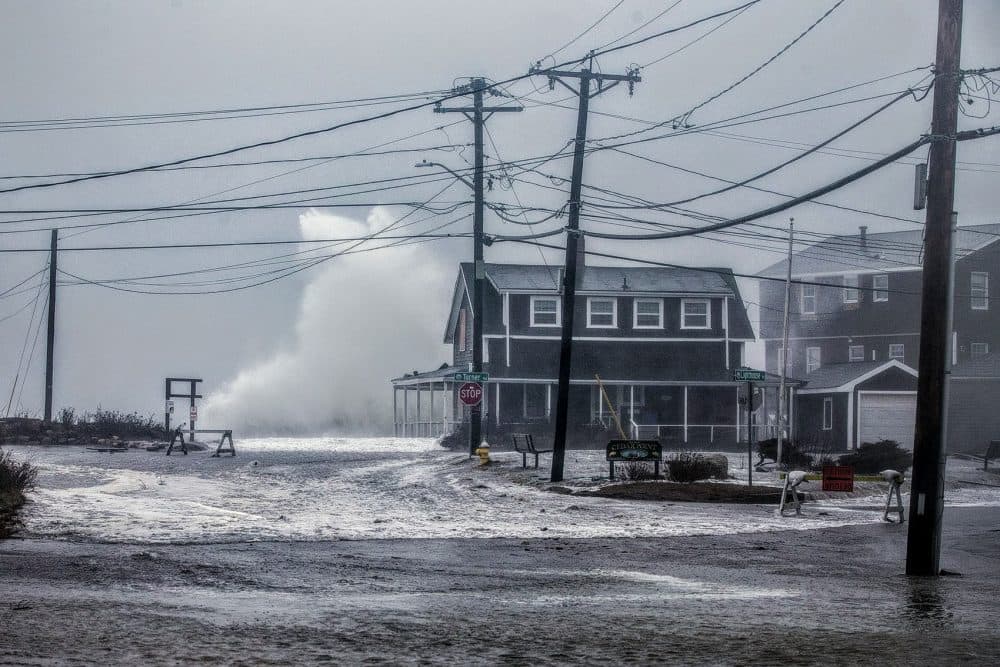Dial For News: When Crisis Strikes, The Simplest Technology Can Be The Best

Improving and broadening distribution channels is one of the pillars of Project CITRUS. In recent months, our team has also been paying particular attention to the digital divide — which may only widen as new technologies and listening platforms continue to emerge.
Outside of the everyday need for general news and information, there are times when that divide is especially acute. Here in the Boston area, the catalyst might be a massive nor'easter, for instance. Trusted local news sources like WBUR naturally have an obligation to spring into action in those moments and do what they do best: disseminate news from agencies and officials, share information and links to emergency resources and give regular updates on whatever the ongoing crisis scenario may be.
Of course, catastrophic weather can also create massive power outages and leave your listeners off the grid. Worse still, such events tend to disproportionately impact historically marginalized communities that may struggle to access your coverage under optimal circumstances.
So how can you reach people during this kind of worst-case scenario?
Everything Old Is New Again
During the Texas power crisis, The Texas Tribune was lauded for nimbly configuring a SMS solution for sharing critical news and information with its audience and answering people's urgent questions. Reporting for Neiman Lab, Hanaa’ Tameez summed up part of the Tribune's reasoning for choosing that method:
Refreshing websites, incessant application push notifications, checking social media platforms, and even iMessage require a certain internet signal strength and use up data. Power has been going in and out in Texas for days, and not everyone has an unlimited data plan. All of those things can also drain phone batteries. SMS, on the other hand, only requires access to the cell phone’s network (though some providers were struggling with outages in Texas earlier this week).
In a nutshell, when conserving phone battery is priority one and connectivity is spotty at best, SMS offers a practical, fast and low-data solution.
But it also wasn't necessarily an obvious choice, as Sarah Alvarez, the founder and editor of Outlier Media, noted:
There is almost nothing less of-the-moment than SMS technology, which has been almost the same since it first showed up in the early 1990s. What is notable about a newsroom using SMS is how almost universally accessible the technology is and how service-oriented it can be.
What if accessing the latest news was as simple as dialing a phone number? Just a regular old phone number — no fiddling with apps, no Wi-Fi, no special hardware.
Long story short, we were inspired by the Tribune's work. The SMS outreach made a sizable, tangible impact in local communities reeling from a devastating event. More broadly, the effort's radical inclusivity stood out. And of course, it got us working on a way WBUR could reliably distribute audio content and segments using very little bandwidth should the need ever arise.
Dial-A-Newscast
Before long, we started wondering: What if accessing the latest news was as simple as dialing a phone number? Just a regular old phone call — no fiddling with apps, no Wi-Fi, no special hardware.
OK, yes, during emergencies, the official recommendation from the state of Massachusetts is to "use text messaging to communicate instead of voice calls, as data-based services like texts and emails are less likely to experience network congestion."
Nevertheless, we wanted to find out if dialing a phone number to hear WBUR coverage was technically achievable. Emergencies aside, offering a spectrum of options for connecting with your news and information via low-tech, widely understood and practically frictionless means like a phone number only stands to increase your reach. Better still, a single, unchanging phone number would require zero upkeep if we ever put one into production.
To avoid keeping you in suspense, it was in fact achievable. Here's an example of what the experience looks and sounds like.
Apart from its practicality, there was something delightfully anachronistic about dialing a number and having a broadcast host — it's local legend Bob Oakes! — seemingly answer your call and begin delivering the news. Just imagine the promotional copy: "Add WBUR to your starred contacts!"
Choosing What Callers Hear
We chose WBUR's newscast for the content for this experiment. A fresh one publishes hourly — which was a real boon for testing — and newscasts always contain headline stories that would no doubt be useful for listeners to hear in a crisis situation.
Live radio, of course, can be difficult to beat during ever-changing news events. But during a hypothetical disaster, even dialing into live radio from your phone would be a major battery suck. And from a user-experience point of view, on-demand audio is hard to top. You get only the news you need and expect, exactly when you want it. If you tune into the radio, you could wait 30 minutes or longer listening to, say, a national news story before you hear something practical or useful. It wastes time and battery life.
Ideally, a reporter could be assigned to produce on-demand audio updates at a regular interval — something Project CITRUS explored around the 2020 election — and those updates could then be heard when a listener dials a specific phone number configured to play WBUR emergency updates.
Do It Yourself
Actually getting a working prototype up and running was relatively straightforward.
For the record, we did also fiddle with a parallel SMS response. But the process for the user involves more friction than dialing a number; they have to opt in to a text conversation before asking for the newscast. And the serious limits on audio file size would have handcuffed us even more.
Twilio was an easy choice for a vendor. They're an industry leader in phone integration. Plus, they're inexpensive and they have strong supporting materials. Their Python tutorial is a good place to start, though we did have a few hiccups. It does move very slowly and methodically but it could still overwhelm a beginner, especially one who has never worked with, say, Python virtual environments.
To speed things up, we created a quick-start repo. If you are an experienced developer — especially one who's worked with Python, Flask and/or Heroku — this should save you some time. You'll still have to add a few lines of code to grab a relevant MP3 URL from, say, an RSS feed (you could also manually update, and then re-deploy), but you can still have your demo working in a matter of hours. Lastly, but most importantly, always be sure to read the manual.

